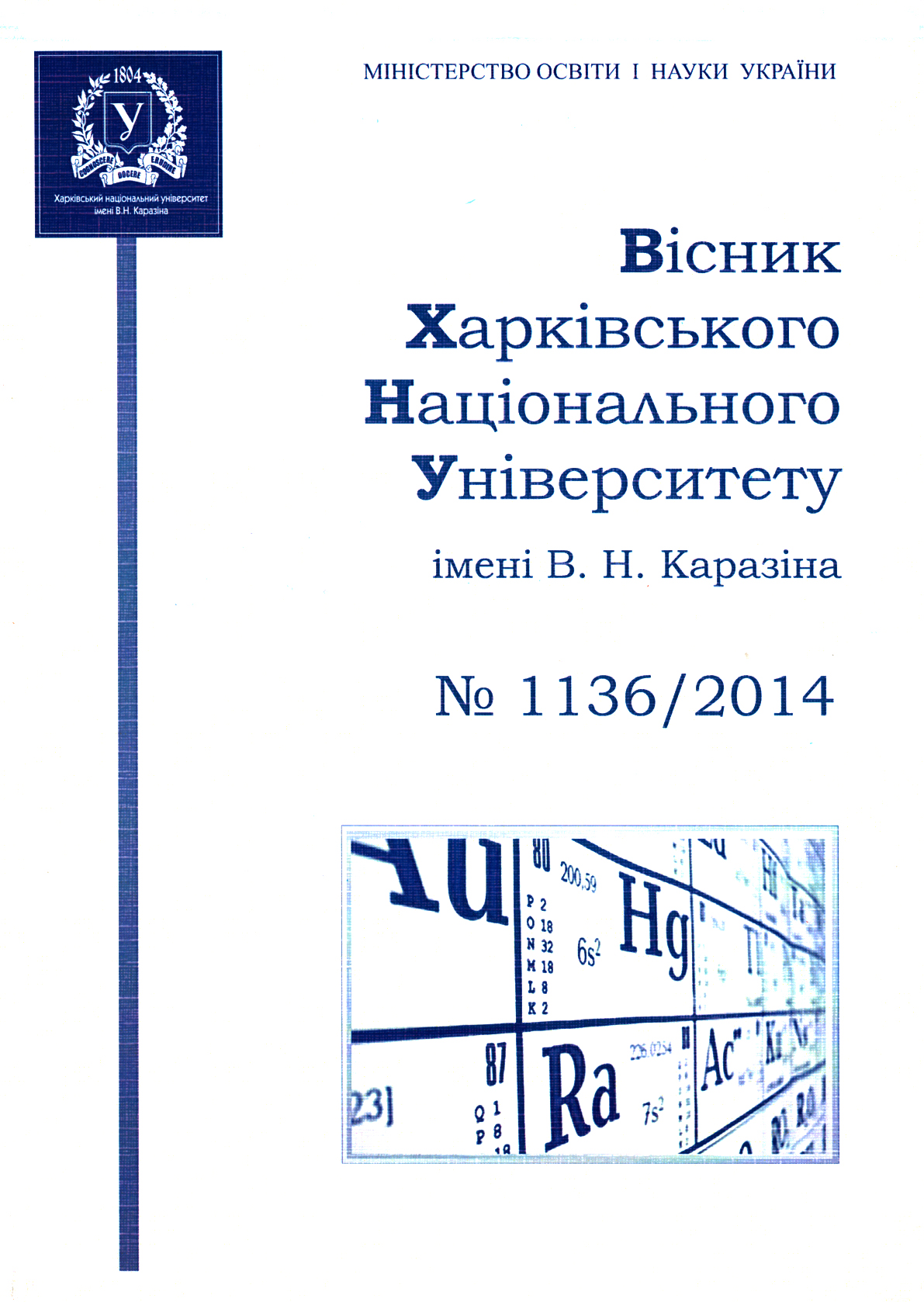Water influence on electronic properties of single-walled carbon nanotubes
Abstract
By using the VASP software package within a time-dependent density functional the ab inito molecular dynamics simulation of empty single-walled carbon nanotube (SWCNT) (10.5 ) and SWCNT (10.5) with different number of water molecules inside (from 15 to 40) at the temperature of 300 K was performed. It was found that rising the number of water molecules inside of the tube causes increasing the band gap. The formation of two-dimensional cylindrical water structures inside a partially filled SWNT (10,5) near the inner surface of the tube are observed.
Downloads
References
R. B. Weisman, Sh. Subramoney. Carbon Nanotubes, The Electrochemical Society Interface, Summer 2006, Vol. 15, No.2, p. 42.
Carbon Nanotubes Applications on Electron Devices Edited by J. M. Marulanda, 570 p., Pub-lisher.
M.S. Dresselhaus et al. Raman spectroscopy on one isolated carbon nanotube, Physica B, 2002, Vol. 323, p 15–20.
Tonya K. Cherukur et al. Length- and Defect-Dependent Fluorescence Efficiencies of Individ-ual Single-Walled Carbon Nanotubes, ACS Nano, 2012, Vol. 6, No. 1, p. 843–850.
S. Cambr´e et al. Luminescence Properties of Individual Empty and Water-Filled Single-Walled Carbon Nanotubes, ACS Nano., 2012,Vol. 6, p. 2649.
J. G. Duque et al. Fluorescent Single-Walled Carbon Nanotube Aerogels in Surfactant-free Environments, 2011, ACS Nano. Vol. 5, p. 6686
V. C. Moore et al. Individually Suspended Single-Walled Carbon Nanotubes in Various Sur-factants, Nano Letters, 2003, Vol. 3, No. 10, p. 1379-1382.
http://turin.nss.udel.edu/research/tubegenonline.html
L. Martínez et al., Packmol: A package for building initial configurations for molecular dy-namics simulations, Journal of Computational Chemistry, 2009, Vol. 30, p. 2157-2164.
J.P. Perdew, K. Burke, M. Ernzerhof. Generalized Gradient Approximation Made Simple Physical review letters, 1996, Vol. 77, p. 3865.
G. Kresse, D. Joubert. From Ultrasoft Pseudopotentials to the Projetor Augmented-Wave Method, Physical review B, 1999,Vol. 59, p. 1758.
O. Postupna, H. M. Jaeger, O. V. Prezhdo. Photoinduced Dynamics in Carbon Nanotube Ag-gregates Steered by Dark Excitons, J. Phys. Chem. Lett., 2014,Vol. 5, No.21, p. 3872−3877.
R. Long, O. V. Prezhdo. Asymmetry in the Electron and Hole Transfer at a Polymer–Carbon Nanotube Heterojunction, Nano Letters, 2014, Vol. 14, No. 6, p. 3335-3341.
R.B. Weisman, S.M. Bachilo, Dependence of Optical Transition Energies on Structure for Single-Walled Carbon Nanotubes in Aqueous Suspension: An Empirical Kataura Plot ,Nano Letters, 2003, Vol 3, No. 9, p. 1235-1238.
M. S. Strano et al. Assignment of (n, m) Raman and Optical Features of Metallic Single-Walled Carbon Nanotubes, Nano Letters, 2003, Vol. 3, No. 8, p. 1091-1096.
J. A. Thomas, A. J. H. McGaughey. Density, distribution, and orientation of water molecules inside and outside carbon nanotubes, J. Chem. Phys. 2008, Vol. 128, 084715.




